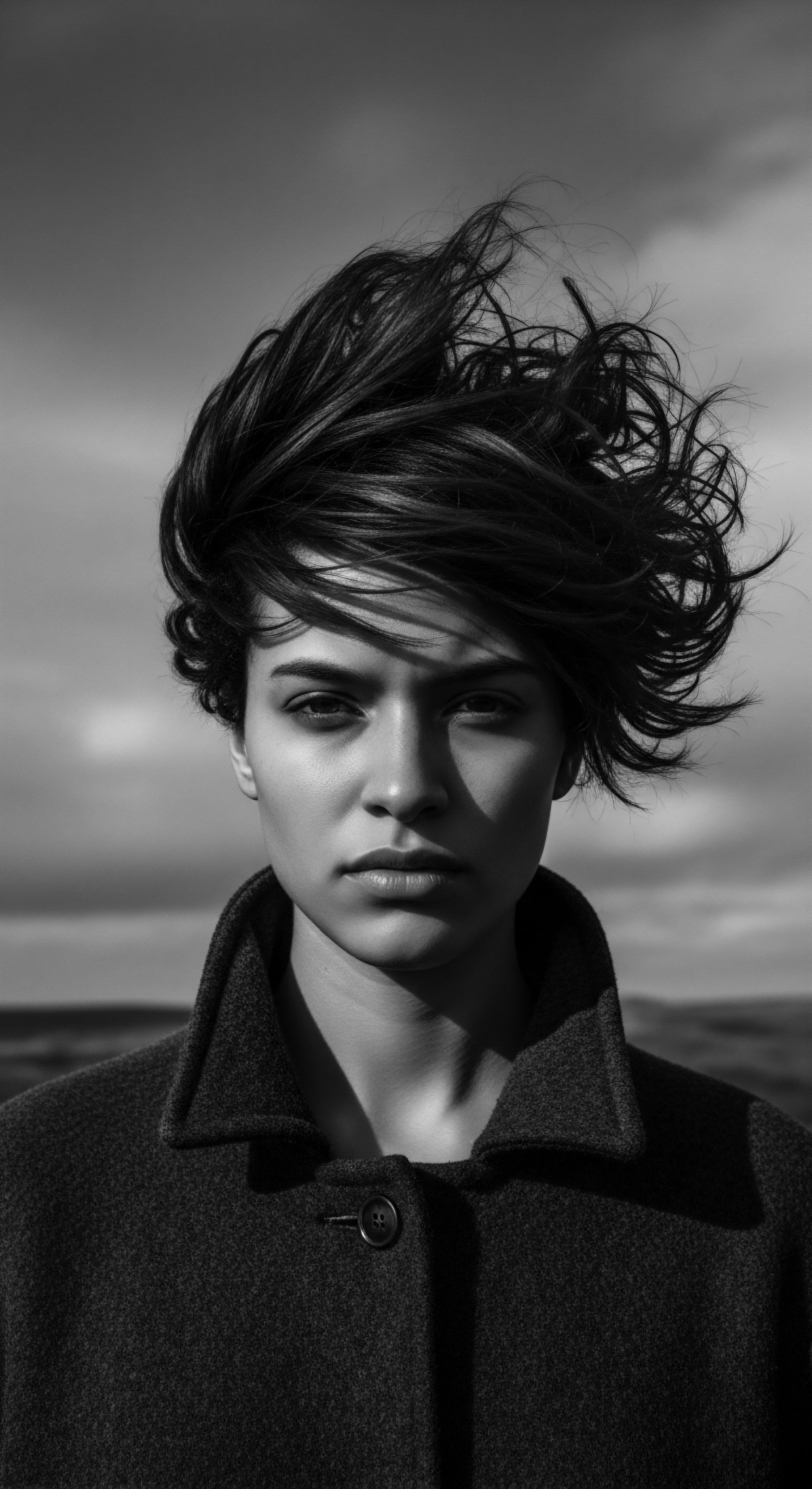
Fundamentals
The concept of Silk Fabric, within Roothea’s ‘living library,’ extends far beyond a mere material description; it represents a profound connection to ancestral practices and the enduring heritage of textured hair. At its most basic, silk is a natural protein fiber, spun by the larvae of various insects, predominantly the mulberry silkworm (Bombyx mori). This remarkable filament, known for its smooth texture and inherent strength, has graced human existence for millennia, offering both practical utility and symbolic significance. Its composition, primarily fibroin, a protein with a unique crystalline structure, gives it qualities that have been intuitively understood and valued by communities for centuries.
For those beginning their exploration of textured hair care, understanding the fundamental nature of silk reveals why it has held such a revered place. The fiber’s smooth surface means less friction against delicate hair strands, a crucial aspect for hair prone to tangling and breakage. Imagine the gentle glide of silk against a tender curl, preserving its integrity through the night or within protective styles. This basic physical attribute is a cornerstone of its definition, explaining its historical and ongoing relevance.
Silk Fabric, in its simplest interpretation, is a smooth, strong natural protein fiber, valued for centuries for its ability to minimize friction and protect delicate hair, particularly textured strands.
The historical use of silk, even in its most rudimentary forms, speaks to an ancient understanding of its protective qualities. Before modern scientific analyses could detail its protein structure, ancestral wisdom recognized the tangible benefits of softer coverings for hair. This foundational knowledge, passed down through generations, laid the groundwork for its role in hair traditions.
Early applications of silk, or silk-like fibers, for hair care were often intertwined with broader cultural practices.
- Protection ❉ Covering hair with smooth materials shielded it from environmental elements, dust, and harsh surfaces during sleep.
- Preservation ❉ Maintaining intricate hairstyles, often requiring hours of work, was made possible by reducing disturbance.
- Comfort ❉ The soft feel of silk against the scalp provided a soothing sensation, enhancing the experience of rest.
These practical considerations formed the initial meaning of silk’s utility, a meaning that has only deepened with time and a growing appreciation for its heritage in hair care.
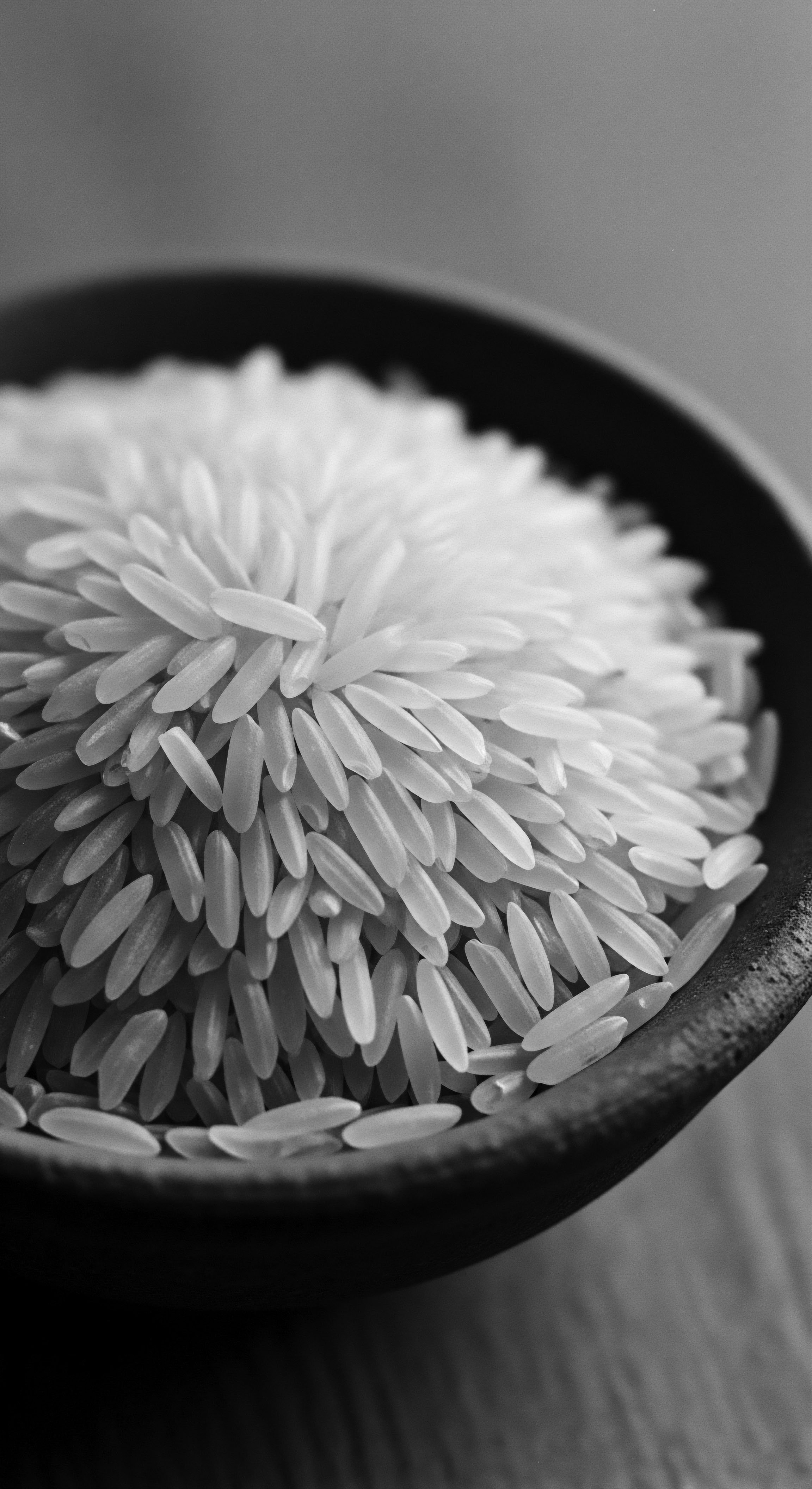
Intermediate
Moving beyond the elementary, the intermediate meaning of Silk Fabric for textured hair care reveals a more intricate understanding of its biophysical properties and their profound impact on hair health, all while maintaining a deep connection to its cultural heritage. The fiber’s smooth, tightly woven structure significantly reduces mechanical stress on hair strands. Unlike rougher materials such as cotton, which can create micro-abrasions and absorb essential moisture from the hair, silk allows hair to glide across its surface. This characteristic is particularly vital for textured hair, including coils, curls, and waves, which possess an inherently delicate cuticle layer that is more susceptible to damage from friction.
The protein composition of silk, rich in amino acids, also plays a subtle, yet significant, role. While not directly transferring nutrients to the hair in a medicinal sense, its inherent compatibility with hair’s own protein structure contributes to a gentle interaction. This bio-affinity helps explain why silk feels intuitively right for hair, almost as if it understands the hair’s very being. The absence of static electricity build-up, a common issue with synthetic fabrics, further underscores silk’s benefit, preventing frizz and flyaways that can disrupt carefully crafted styles and contribute to hair stress.
Silk Fabric’s intermediate significance lies in its biophysical properties—low friction, protein compatibility, and static resistance—which collectively safeguard the delicate structure of textured hair, preserving its moisture and integrity.
The cultural history of silk head coverings in various communities, particularly within the African diaspora, elevates its definition beyond mere material science. These coverings, whether in the form of headwraps, bonnets, or scarves, were not simply functional items; they were symbols of identity, resilience, and a quiet act of self-preservation. From the West African origins where headwraps conveyed status and cultural affiliation, to their adoption in the Americas under challenging circumstances, silk and silk-like fabrics became a silent ally in protecting ancestral hair traditions.
The historical context reveals that even when forced to cover their hair, enslaved women often used materials that, where possible, offered some degree of protection, with silk being a prized, though often inaccessible, option. This adaptive use highlights a deep, inherited knowledge of what served hair best. Later, as African American women navigated societal pressures and evolving beauty standards, silk bonnets and scarves became staples for maintaining straightened styles and, subsequently, for protecting natural hair textures as the natural hair movement gained momentum.
| Aspect of Care Friction Reduction |
| Historical Application (Pre-20th Century) Used in headwraps to minimize tangling and breakage during sleep or daily activity. |
| Contemporary Relevance (21st Century) Primary benefit in silk pillowcases and bonnets to reduce mechanical damage and preserve curl patterns. |
| Aspect of Care Moisture Retention |
| Historical Application (Pre-20th Century) Materials that did not absorb natural oils were preferred for nighttime coverings, though silk's specific role was perhaps intuitively understood. |
| Contemporary Relevance (21st Century) Prevents hair from drying out by allowing natural oils and applied products to remain on the hair, rather than being absorbed by the fabric. |
| Aspect of Care Style Preservation |
| Historical Application (Pre-20th Century) Aiding the longevity of elaborate braided or twisted styles. |
| Contemporary Relevance (21st Century) Maintains various styles, from straightened hair to defined curls, reducing the need for frequent restyling and heat application. |
| Aspect of Care The enduring utility of silk in hair care spans centuries, adapting its protective qualities to meet the evolving needs and expressions of textured hair. |
The continued use of silk and satin (a silk-like weave) in modern textured hair care routines is a testament to this enduring ancestral wisdom. From the simplest act of sleeping on a silk pillowcase to adorning one’s head with a silk scarf, these practices are a quiet nod to generations who understood the subtle power of gentle materials. The material becomes a vessel for a continuous legacy of care, a tender thread connecting the past to the present.
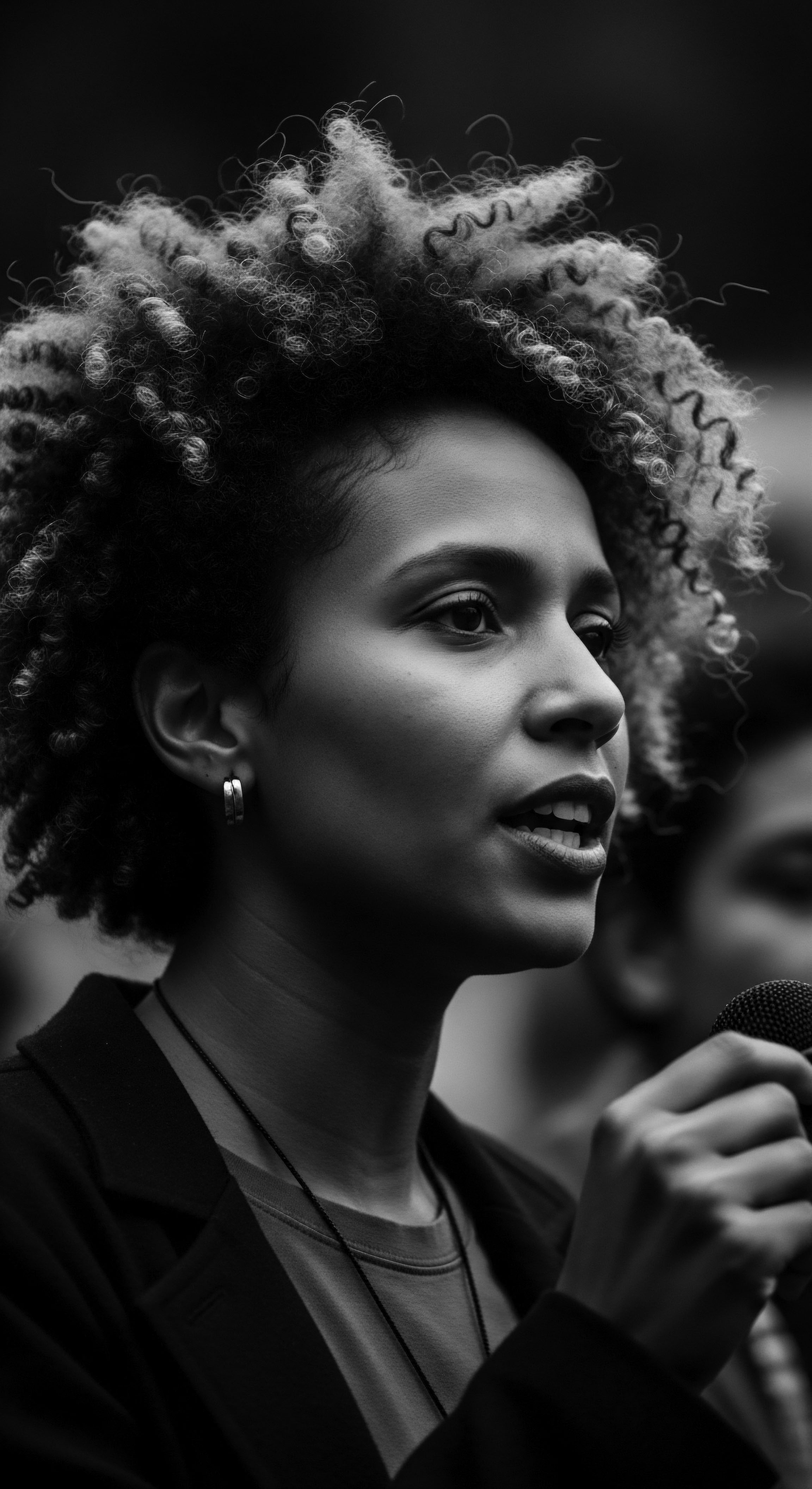
Academic
The academic elucidation of Silk Fabric, particularly concerning its meaning and significance within the extensive domain of textured hair heritage, transcends superficial understanding to reveal a complex interplay of material science, cultural anthropology, and the lived experiences of Black and mixed-race communities. From a material science standpoint, silk’s unique structural characteristics—its smooth, continuous protein filaments composed predominantly of fibroin and sericin—account for its exceptionally low coefficient of friction. This property is paramount for fragile hair types. Studies, such as those by Schwartz & Knowles (1963) and Bhushan et al.
(2014), rigorously demonstrate how friction from various surfaces can abrade the hair cuticle, the outermost protective layer of the hair shaft. For textured hair, characterized by its elliptical cross-section and numerous bends and twists along the strand, the cuticle scales are naturally more exposed and prone to lifting, rendering it more susceptible to mechanical damage. The smooth surface of silk, therefore, acts as a profound safeguard, allowing these delicate strands to glide with minimal resistance, thereby reducing cuticle damage, breakage, and the formation of tangles and knots.
Beyond its quantifiable physical attributes, the meaning of Silk Fabric is deeply imbued with historical and cultural connotations, particularly within the African diaspora. Its role extends beyond a mere protective barrier; it serves as a silent, yet powerful, artifact of resistance, adaptation, and identity preservation. Consider the nuanced history of head coverings among Black women in the Americas.
In pre-colonial African societies, elaborate hairstyles and head adornments, often incorporating fine cloths, served as intricate markers of social status, marital standing, age, tribal identity, and spiritual connection. Hair was considered a conduit to the divine, requiring reverence and careful styling.
With the brutal onset of the transatlantic slave trade, the deliberate shaving of heads upon arrival in the Americas was a dehumanizing act designed to strip enslaved individuals of their identity and cultural lineage. Despite this traumatic disruption, the innate wisdom of hair care persisted. Enslaved women, often compelled to cover their heads as a sign of subservience or for practical purposes in harsh labor conditions, ingeniously transformed these coverings into statements of quiet defiance and cultural continuity.
While access to luxurious silk was rare, the aspiration for and eventual use of smoother, less abrasive fabrics, including silk or its more accessible counterpart, satin, for headwraps and bonnets, became a critical practice. This practice, often performed at night, served to protect hair from the coarse cotton of sleeping surfaces, thereby preserving moisture and preventing breakage that would have been exacerbated by already strenuous living conditions.
The academic lens reveals Silk Fabric as a material embodying low friction and structural integrity, whose historical adoption by textured hair communities signifies a profound cultural adaptation and a silent act of preserving ancestral hair health and identity against systemic adversity.
A specific historical example that profoundly illuminates this connection is the widespread adoption of headwraps and bonnets made from silk or satin among African American women post-emancipation and into the 20th century. While the 19th and early 20th centuries saw significant societal pressure to conform to Eurocentric beauty standards, leading to the use of hot combs and chemical relaxers for hair straightening, the underlying need for hair protection remained. As Helen Bradly Griebel argues in her work, “The African American Woman’s Headwrap ❉ Unwinding the Symbols,” the headwrap, initially a symbol of oppression, was transformed into an expression of empowerment and a representation of African American history.
This transformation was not merely symbolic; it had tangible benefits for hair health. The use of silk-lined head coverings at night became a ubiquitous ritual, safeguarding straightened styles from frizz and breakage, and later, as the natural hair movement gained momentum in the 1960s and beyond, protecting natural coils and curls.
The persistence of this practice, despite shifts in societal norms and hair styling trends, speaks to an enduring, intergenerational knowledge about the biomechanical needs of textured hair. It is a testament to the ancestral ingenuity that recognized the physical properties of silk—its smooth surface, its inability to absorb moisture like cotton, and its capacity to reduce static—as essential for maintaining hair integrity. This knowledge, passed down through the intimate ritual of nighttime hair preparation, forms a critical, albeit often unwritten, chapter in the history of Black hair care. The choice of silk was not simply a luxury; it was a practical application of scientific principles understood through generations of lived experience.
The meaning of Silk Fabric, therefore, is multi-layered. It represents ❉
- Biomechanical Protection ❉ Its low friction coefficient and smooth surface reduce mechanical stress on delicate hair cuticles, minimizing breakage and frizz, particularly crucial for the unique architecture of textured hair.
- Moisture Equilibrium ❉ Unlike absorbent fibers, silk allows the hair to retain its natural oils and applied moisture, preventing dehydration that leads to brittleness and damage.
- Cultural Resilience ❉ The consistent use of silk and satin head coverings across generations in Black and mixed-race communities signifies an adaptive strategy to preserve hair health and identity amidst historical and ongoing societal pressures.
- Ancestral Wisdom Embodied ❉ It embodies the inherited knowledge that recognized and utilized the material’s benefits long before modern science could articulate the precise mechanisms, showcasing a profound connection between traditional practices and contemporary understanding.
The Silk Fabric, within Roothea’s framework, is thus a material deeply intertwined with the physical and cultural well-being of textured hair, a silent guardian that has journeyed through time, carrying the stories of resilience and the enduring spirit of care.
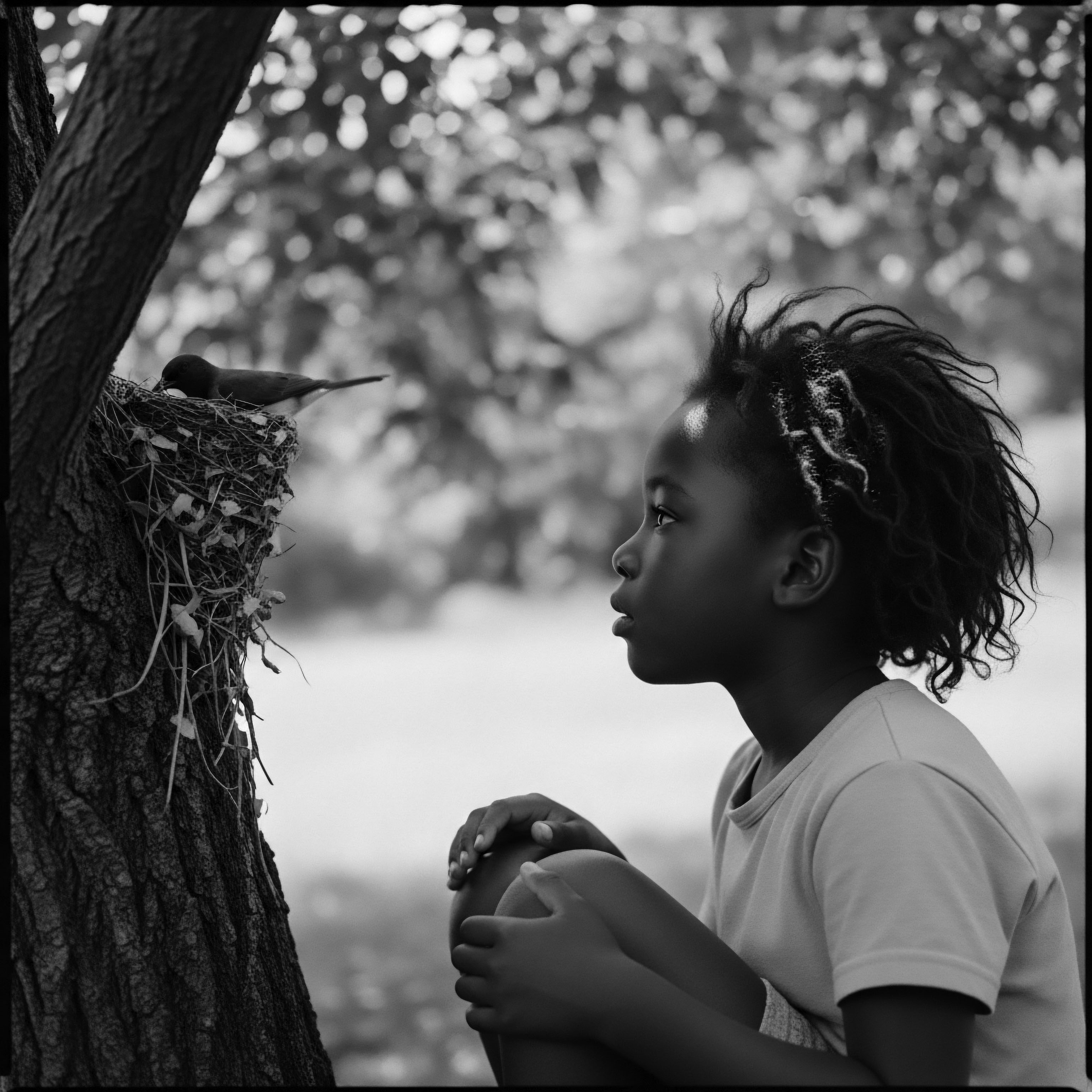
The Silent Sentinel ❉ Silk and the Preservation of Hair Morphology
The inherent morphology of textured hair—from the tightly coiled Type 4C to the more loosely curled Type 3A—presents unique challenges for mechanical integrity. The elliptical shape of these hair strands, coupled with their numerous twists and turns, means that the cuticle scales, which lie flat on straighter hair, are often raised or exposed at the curves of a coil. This architectural reality renders textured hair more susceptible to snagging and abrasion from rough surfaces. The low coefficient of friction exhibited by silk, approximately 0.21 compared to cotton’s significantly higher value (Schwartz & Knowles, 1963; Bhushan et al.
2014), becomes a critical factor in mitigating this vulnerability. When textured hair rubs against a cotton pillowcase, the microscopic fibers of the cotton can catch on these raised cuticles, leading to friction-induced damage, split ends, and tangles. Silk, by contrast, allows the hair to glide effortlessly, preserving the cuticle layer and minimizing mechanical stress throughout the night. This is not merely an aesthetic benefit; it is a biomechanical necessity for the long-term health and length retention of textured hair.
Furthermore, the hygroscopic properties of different fabrics play a significant role in hair moisture. Cotton is a highly absorbent fiber, readily wicking away moisture from hair and skin. For textured hair, which tends to be drier due to the slower distribution of natural scalp oils down the coiled shaft, this moisture depletion is particularly detrimental. Silk, being a protein fiber, is less absorbent of oils and water compared to cellulose-based fibers like cotton.
This means that hair’s natural sebum and any applied conditioning products remain on the hair strand, where they are needed, rather than being drawn into the pillowcase. This property directly supports the hair’s lipid barrier, which is essential for maintaining suppleness and preventing brittleness. The collective impact of reduced friction and moisture retention culminates in a significant reduction in hair breakage, a common concern for individuals with textured hair seeking to maintain length and density. This scientific validation of a long-held ancestral practice underscores the profound, empirical knowledge that guided communities in their choice of materials for hair care.
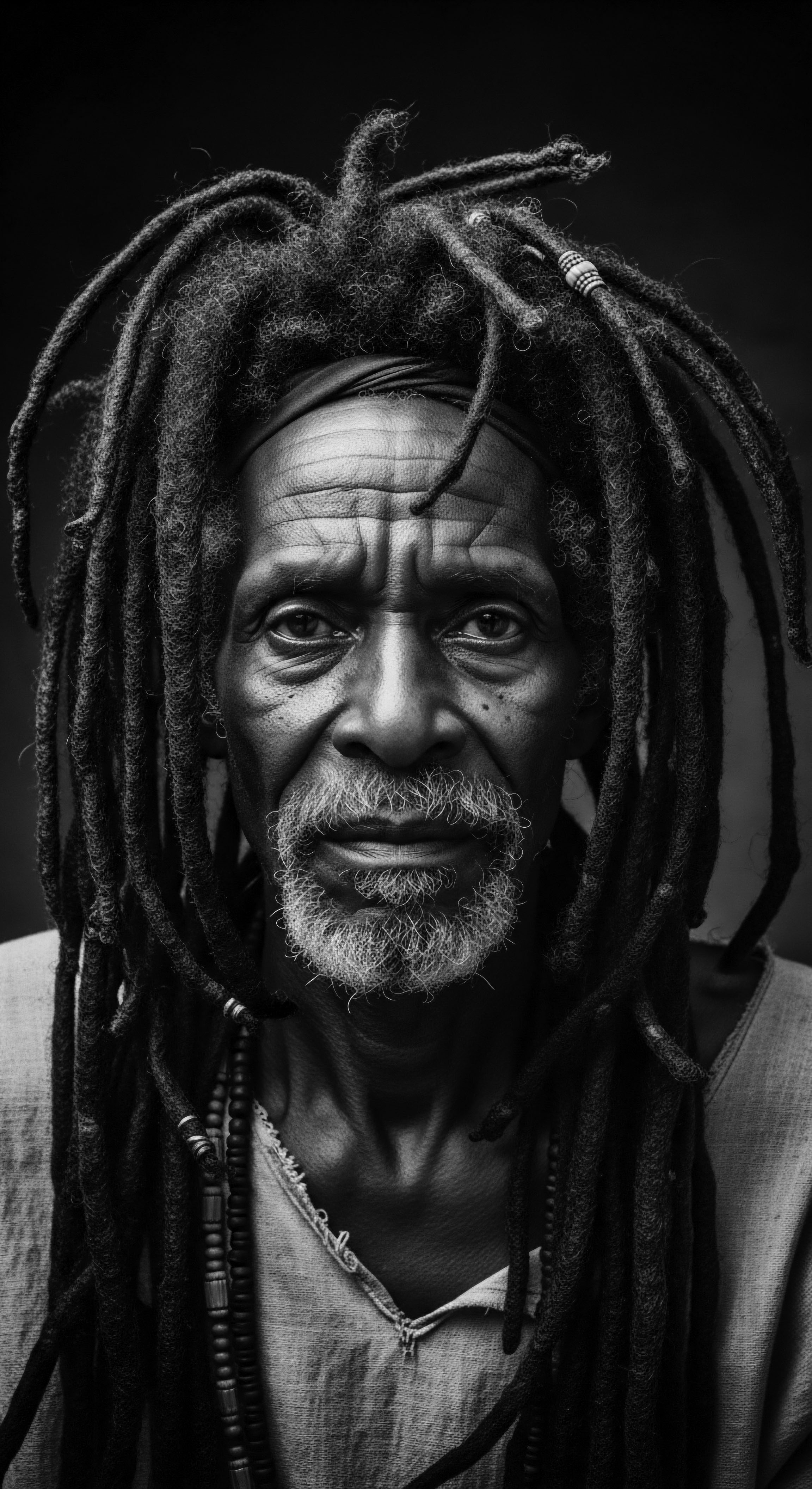
Cultural Adaptations and the Silk Imperative
The historical narrative surrounding silk’s use in textured hair care is deeply interwoven with periods of profound social and cultural shifts. In the context of the African diaspora, the headwrap, often made from various fabrics including silk when available, became a powerful cultural artifact. Originating in West Africa, where intricate head coverings signified status and identity, the practice transformed in the Americas. Under the Tignon Laws of 18th-century Louisiana, for example, free women of color were mandated to cover their hair, a measure intended to signify their supposed lower social standing.
Yet, these women subverted the intent by adorning their tignons with vibrant colors and elaborate styles, turning a symbol of oppression into one of beauty and resistance. While the specific fabric of these historical tignons varied, the underlying principle of protecting and adorning the hair persisted, and the aspiration for smoother, more luxurious materials like silk would have been a natural extension of this protective impulse.
The enduring legacy of hair protection through head coverings continued into the 20th century, particularly as African American women navigated the complexities of hair straightening, often using hot combs or chemical relaxers to conform to prevailing Eurocentric beauty standards for social and economic advancement. The “silk press” technique itself, a method of achieving straight hair without chemicals, gained its name from the desired smooth, lustrous finish akin to silk. Paradoxically, even as hair was straightened, the nightly ritual of wrapping it in silk or satin scarves or wearing bonnets became a crucial practice to maintain the style, prevent reversion, and protect the delicate, heat-treated strands from friction.
This dual function—adapting to societal pressures while simultaneously safeguarding hair health through ancestral wisdom—underscores the profound adaptability and resilience inherent in Black hair care traditions. The Silk Fabric, in this context, becomes a symbol of quiet rebellion, a material choice that prioritized hair health and cultural continuity even in the face of imposed aesthetic norms.
- Historical Headwraps ❉ From the “geles” of the Yoruba to the “dukus” of Ghana, headwraps have carried deep cultural and spiritual meanings, often made from finely woven textiles.
- Post-Emancipation Adaptation ❉ The transition from forced head coverings to chosen protective wraps, with silk and satin becoming preferred materials for their hair-preserving qualities.
- Modern Hair Rituals ❉ The contemporary prevalence of silk bonnets and pillowcases as essential tools for preserving natural curl patterns, reducing frizz, and extending protective styles.
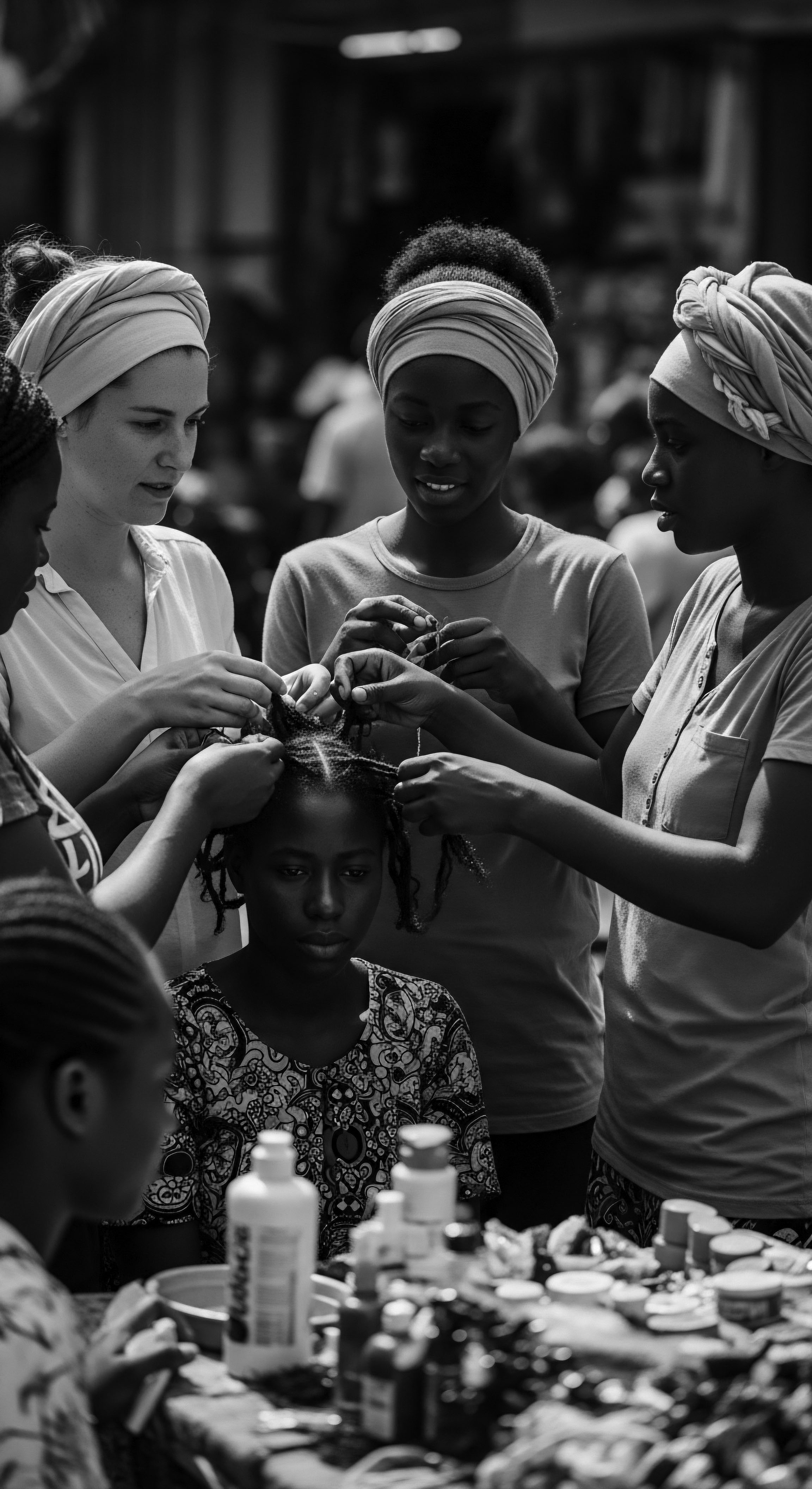
Reflection on the Heritage of Silk Fabric
The journey through the meaning of Silk Fabric, from its elemental biology to its deep resonance within the cultural narrative of textured hair, is a profound meditation on the enduring spirit of care and resilience. It is a story not merely of a fiber, but of a legacy—a gentle, yet unyielding, testament to ancestral wisdom. The “Soul of a Strand” ethos, which guides Roothea’s ‘living library,’ finds a powerful voice in the quiet strength of silk. This material, seemingly simple, has served as a consistent, comforting presence across generations, a silent partner in the tender rituals of hair care that have shaped identity and preserved beauty against formidable odds.
Reflecting on the Silk Fabric, we are reminded that true innovation often lies in the rediscovery and re-contextualization of ancient knowledge. The tactile understanding of its benefits, cultivated through centuries of lived experience, predates and now harmonizes with contemporary scientific validation. This harmonious blend of the old and the new is the very heartbeat of Roothea, inviting us to look upon our hair not just as a physical attribute, but as a living archive of our collective heritage, each strand a repository of stories, wisdom, and a profound connection to those who came before us. The Silk Fabric, in its continuous service to textured hair, remains a symbol of this unbroken lineage, a soft whisper of ancestral love that continues to protect and adorn the crowns we carry.

References
- Bhushan, B. et al. (2014). Friction Dynamics of Straight, Curly, and Wavy Hair. Journal of Cosmetic Science.
- Griebel, H. B. (1994). The African American Woman’s Headwrap ❉ Unwinding the Symbols. Journal of American Culture.
- Omotoso, A. (2018). Hair Story ❉ Untangling the Roots of Black Hair in America. St. Martin’s Press.
- Popenoe, R. (2004). Feeding Desire ❉ Fatness, Beauty, and Power Among the Azawagh Arabs of Niger. Routledge.
- Rosado, S. (2003). The Grammar of Hair ❉ An Ethnographic Study of Hair and Hair Grooming Practices Among African American Women. Temple University Press.
- Schwartz, A. M. & Knowles, D. C. (1963). Frictional Effects in Human Hair. Journal of the Society of Cosmetic Chemists.
- Tharps, L. (2014). Hair Story ❉ Untangling the Roots of Black Hair in America. St. Martin’s Press.
- Wong, N. Williams, K. Tolliver, S. & Potts, G. (2025). Historical Perspectives on Hair Care and Common Styling Practices in Black Women. Cutis.
